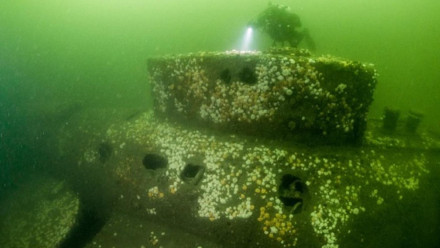History
Service
HMS E5 was a submarine that served in World War I. In December 1913, the E5 was part of the 8th Submarine Flotilla, based in Portsmouth as part of the Home Fleet. She was laid up for a refit when the war broke out, ending it prematurely to rejoin the flotilla.
During the war, she was engaged in many actions on the North Sea, mainly focused at blocking German shipping. In April 1915 the E5 engaged and damaged the German steamer Schwarzwald, but this ship managed to get away.
On 25 September 1915, the E5 torpedoed the German Sperrbrecher (an auxiliary minesweeper engaged in breaking the Allied blockade of German shipping) SP11, causing it to be beached. Attempts were made by the Germans to salvage her, but without success.
Final Fate
There are different theories about the reason for the loss of the E5. One is that she struck a mine on 7 march 1916, possibly after straying into a minefield upon being sighted by the German light cruiser Regensburg. Another theory attributed her loss to depth charge attack by torpedo boats escorting the battle cruiser Seydlitz. Recent archaeological finds seem to contradict both theories.

Description
Type: British E-class submarine
Yard: HM Dockyard, Chatham, Vickers, Barrow (laid down 1911, commissioned 1913).
Crew: 3 officers and 28 men.
| People on board | 31 |
|---|---|
| Speed | 15 knots ~ 17 mph (28 km/h) |
| Length | 177 ¼ feet (54 m) |
| Width | 15 ½ feet (4.7 m) |
Status
In 2016 divers found the wreck of the E5 off the Dutch island of Schiermonnikoog. Her hatches were open, which suggests that the crew had tried to escape. There was no sign of damage to her hull, indicating that she had not sunk as a result of enemy action. The wreck was located as part of the Subident01 project, which aimed to identify possible submarines wrecks above the Dutch Islands in the North Sea. An expedition was organised in collaboration with the Cultural Heritage Agency of the Netherlands, the Department of Waterways and Public Works, the Dutch Navy and Coastguard, the foundations Nabestaanden Onderzeeboten and Noordzeewrakken and the dive teams Zeester and Duik de Noordzee Schoon. The dive teams were able to identify one of the wrecks as the HMS E5. This model was made from the video footage of diver and cameraman Peter van Rodijnen: